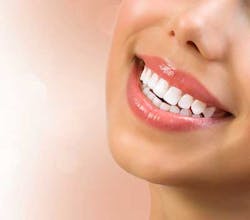An argument for clear aligners and clear braces
So you’ve decided to stop referring out “simple” orthodontic therapy cases after seeing the multitude of options in the many dental trade journals. You've heard about the different clear aligner options, and now you feel ready to start with a conservative case. The subjectivity of “conservative” depends on the specific provider, but mainly you’ve decided not to place traditional brackets and wires and want to start with clear aligner therapy or clear braces. A possible first case that you’ve decided to tackle is treatment for mild spacing or crowding. Your patient may have had braces before and there is mild crowding in the mandibular anterior dentition. Or, possibly there is a mild diastema between the maxillary incisors or spacing between premolars from a previous incomplete orthodontic case. Nevertheless, you’ve chosen clear aligners to treat your case and want to educate your patients on the pros and cons.
Further reading |Study finds a 34% rise in dentists performing orthodontic treatments
Educating patients on the advantages and disadvantages of clear aligner therapy or clear braces significantly depends on your patient’s expectations and compliance. First, as a provider, you must rule out conventional braces by having a clear communication with the patient. If the patient desires no treatment responsibilities, is compliant in visiting the office monthly, and wishes to have all of the treatment performed by the doctor, then conventional braces is the only treatment to recommend. Clear aligner therapy can be ruled out immediately. However, if patients desire the benefits of clear aligner therapy, the pros and cons must be presented to them. First, the patient must understand their compliance and responsibilities. They need to consistently wear the aligners 22 to 23 hours per day, and only remove them to eat. One of the benefits of the aligner systems is the opportunity to see the end result of straight teeth and the progression of tooth movement during the multitude of stages. To ensure compliance, it’s helpful to continuously show each patient the benefits of wearing the aligners as often as possible.
Related |In Favor of Invisible
One of the benefits of wearing the aligners and removing them to eat allows patients to consume food without limitations. With traditional braces, certain foods can become entangled within the wire structure and make them difficult to clean. With the clear aligner systems, there are no limitations in which foods can be consumed, as long as patients are diligent with their oral hygiene in brushing and flossing after each meal. Some of the other advantages of clear aligners and clear braces include …
- Approximating the treatment duration a little more precisely than braces
- Avoiding extractions of premolars by creating interdental space via interproximal reduction
- Less frequent trips to the dental chair by allowing the patients to replace their aligners on their own every few weeks
- Healthier periodontal tissue and less risk of enamel decalcification by avoiding brackets
- Esthetics: Clear aligners are often not visible, allowing patients to smile with greater confidence
Clear aligner and clear braces systems, however, do have their disadvantages …
- Initially there can be slurred speech
- Pain from tooth movement during aligner changes
- Unexpected attachment loss, resulting in patients returning to the dental chair more frequently
- Errors with impressions resulting in delayed treatment or mid-course corrections.
- Losing the aligners during treatment
One thing is certain in differentiating between the systems and moving forward with clear aligner therapy: patients need to maintain what they sacrificed to achieve by being committed to retainers. No matter what route your patients choose, it is imperative to ensure a lifetime of straight smiles with understanding the importance of retention. In regard to retainers and teeth: If you don’t use ’em, you’ll move ’em.

